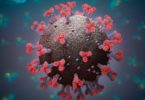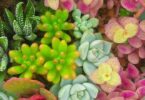The family in which many plants are C4 type
(a) Malvaceae
(b) Solanaceae
(c) Crucifereae
(d) Graminae
The first reaction in photorespiration is
(a) Carboxylation
(b) Decarboxylation
(c) Oxygenation
(d) Phosphorylation
Which of the following cycles shows oxaloacetic acid as the first stable product
(a) Calvin cycle
(b) Hatch and Slack cycle
(c) C2 cycle
Related: Respiratory system quiz
C4 plants are also known as
(a) Hatch and Slack type
(b) Calvin type
(c) Calvin and Bassham type
(d) Emerson type
Which of the chloroplast does not contain grana?
(a) Pea leaf
(b) Hydrophytic stem
(c) Bundle sheath of sugarcane leaf
(d) Mesophyll of grasses
In photorespiration, glycolate is converted to CO2 and serine in
(a) Chloroplasts
(b) Peroxisomes
(c) Vacuoles
(d) Mitochondria
Related: Digestive system questions
Which of the following is not a C4 plant?
(a) Sugarcane
(b) Maize
(c) Sorghum
(d) Wheat
Peroxisomes are found in
(a) Bundle sheath
(b) Endosperm
(c) Mesophyll cells
(d) Vascular bundle
C4 photosynthesis does not occur in
(a) Zea mays
(b) Saccharum munja
(c) Saccharum officinarum
(d) Euphorbia splendens
Related: Glycolysis quiz
Which of the following enzymes is responsible for the conversion of oxaloacetic acid into malic acid
(a) PEP oxidase
(b) PEP reductase
(c) PEP dismutase
(d) Malate dehydrogenase
Photorespiration takes place is
(a) Chloroplast, mitochondria
(b) Mitochondria, peroxisome
(c) Chloroplasts, peroxisome, mitochondria
(d) Chloroplasts, cytoplasm, mitochondria
Which of the following is a CAM plant?
(a) Maize
(b) Sugarcane
(c) Agave
(d) Mango
Related: Planck’s Quantum Theory Quiz
In succulent xerophytes, there is an accumulation of malic acid at night; this path of CO2 metabolism is called:
(a) Beta carboxylation
(b) Hatch and Slack cycle
(c) Crassulacean acid metabolism
(d) Calvin cycle
CAM photosynthesis occurs in plants with
(a) Thin green leaves with reticulate venation
(b) Thin green leaves with parallel venation
(c) Fleshy green leaves
(d) Thin colored leaves
The source of CO2 for photosynthesis during the day in CAM plants is
(a) 3-PGA
(b) Malic acid
(c) Oxalo-acetic acid
(d) Pyruvate
Related: Redox reactions practice questions
Which one of the following is wrong about photorespiration?
(a) It is a characteristic of C3 plants
(b) It occurs in chloroplasts
(c) It occurs in the time only
(d) It is a characteristic of C4 plants
In the CAM cycle, during the formation of maleic acid, stomata remain.
(a) Open
(b) Closed
(c) Semiopen
(d) Always closed
The oxygen liberated during photosynthesis by green plants comes from:
(a) glucose
(b) water
(b) carbon dioxide
(d) chlorophyll
Sugarcane shows high efficiency of fixation because of
(a) Calvin cycle
(b) Hatch and Slack cycle
(c) TCA cycle
(d) Greater sunlight
Related: Amino acid structure quiz
__ is a CAM plant
(a) Maize
(b) Pineapple
(c) Onion
(d) Pea
Which of the plants can show the CAM cycle
(a) Members of graminae
(b) Members of cactaceae
(c) Members of chenopodiaceae
Which one of the following is the C4 plant
(a) Spirogyra
(b) Pinus
(c) Sorghum
(d) Funaria
Related: Stoichiometry practice questions
Which of the following plants stand intermediate between C3 and C4 plants
(a) Triticum aestivum
(b) Zea mays
(c) Panicum milioides
The energy wastage occurs during
(a) Dark respiration
(b) Photosynthesis
(c) Glycolysis
(d) Photorespiration
Which of the following anatomical features characterize a C4 plant?
(a) Chloroplast packed bundle sheath cells
(b) Small–sized stomatal pores
(c) More compact mesophyll with reduced intercellular spaces
(d) All the above
Related: Physics Kinematics test
How many types of photosynthetic cells occur in C4 plants?
(a) One type
(b) Two types
(c) Four types
(d) Eight types






